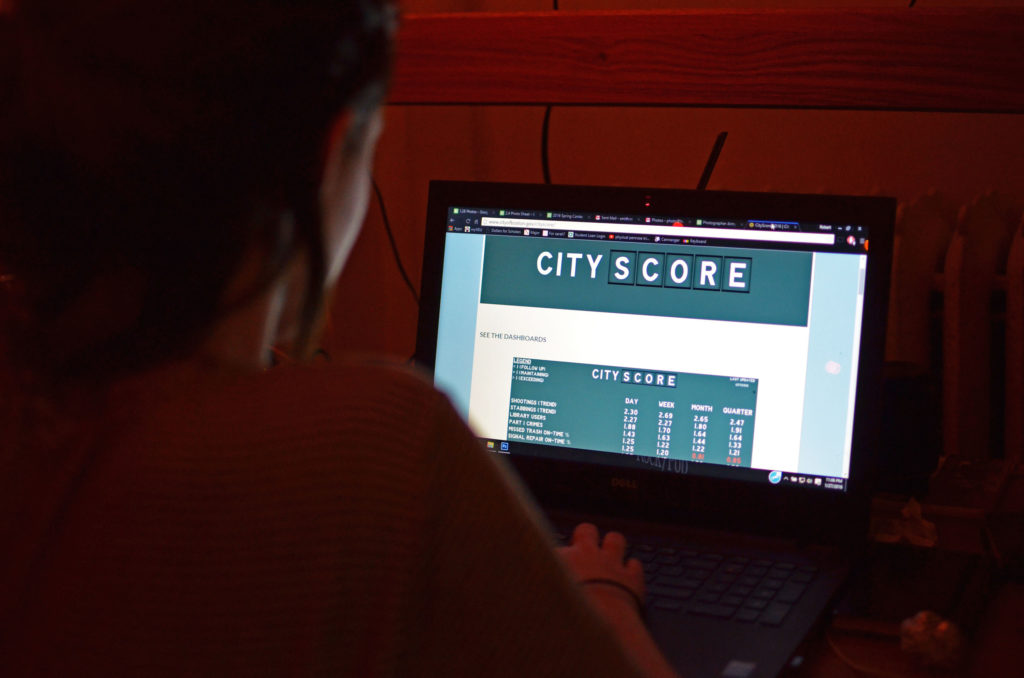By Oliver Price, News correspondent
CityScore, a new municipal activity report, offers a way for Bostonians to track the City’s civil activities. Unveiled by Mayor Martin J. Walsh, the database tracks and publishes daily statistics on the City of Boston’s health and services.
This program serves to provide the city with a brief and numerical measure of Boston’s reported events. The chart on CityScore’s website shows measures like shootings, Emergency Medical Services response time and fire department incidents. The dashboard displays figures detailing city activities of the day, week, month and quarter.
In a press release on Jan. 15, Walsh was optimistic that the program will benefit the city.
“This overview of city metrics allows us to take immediate action within our departments to improve city services to make our city safer and smarter,” Walsh said.
CityScore evaluates various aspects of the health of a city, from stabbings statistics to library use. Each of these aspects is assigned a “CityScore.” These figures can then be cross-referenced with the legend to determine city performance.
A score greater than one indicates the city is performing above its goal in a specified area. A score of exactly one shows it is performing as expected, while a score of less than one means the city is performing below standard.
The Huntington News tracked the numbers for the week of Jan. 18 to 26 to sample whether the statistics highlight any potential areas of success in Boston’s services as well as any possible causes for concern.
The table shows that the CityScore for the trends of shootings and stabbings are decreasing. Both of these were consistently awarded a score of greater than two throughout the week, indicating that Boston is facing minutely less violent crime.
However, 311 Call Center Performance saw a consistent week of less than one, revealing an area in need of improvement.
Whether these numbers are valuable or not is up for debate. Daniel O’Brien, assistant professor of public policy and urban affairs at Northeastern, said that it is better to look at them in the long run.
“The use of these numbers daily is not useful,” he said. “You never evaluate a player on one game.”
O’Brien also commented that the numbers do not show the full story.
“[For example,] there is a lot less violence in the winter,” O’Brien said. He went on to explain that these statistics seem completely within reasonable error and that numbers around the CityScore of one are still normal.
Nevertheless, O’Brien does believe that CityScore is a successful tool.
“Real innovation is not so much data nor really measurement, but the intersection with the public,” he said.
However, Sasha Deych, 22, a fifth-year international relations student at Northeastern, is not convinced.
“I personally think that it’s not that useful,” Deych said. “We have statistics regardless. It may be an extra asset but won’t be paid much attention to… What does 1.86 mean? Just a number placed in front of me – but I do not know the meaning behind it.”
Brian McCarthy, 22, a junior biology student at Northeastern, lauded CityScore for its transparency but added that data should not be used in lieu of other tools.
“In a lot of cases, data on a governmental level is generally hard to find,” McCarthy said. “In general, being transparent is a good thing for any government… [but] data [should not be used] as an end-all, be-all.”
O’Brien believes that CityScore is leading the field in publicizing aggregated data, despite the relevance of its daily statistics.
“As much as we are striving in the field, one of our challenges is taking something sophisticated and making it accessible for the public,” he said.
Photo by Robert Smith









